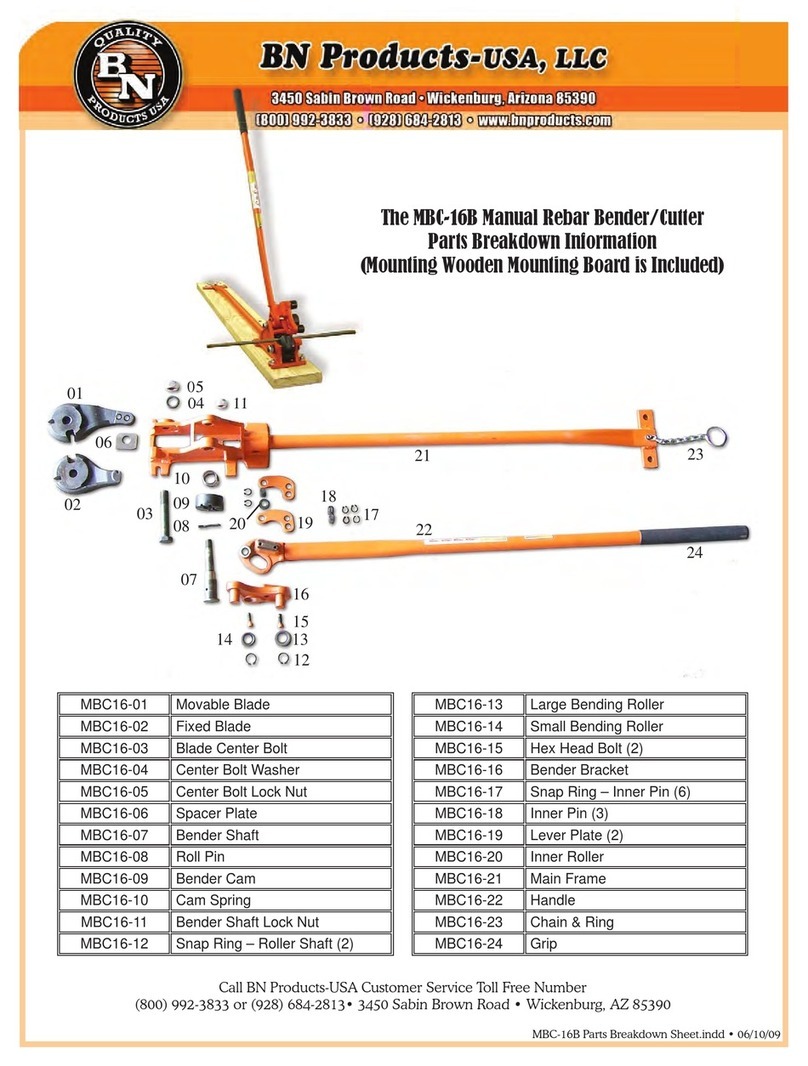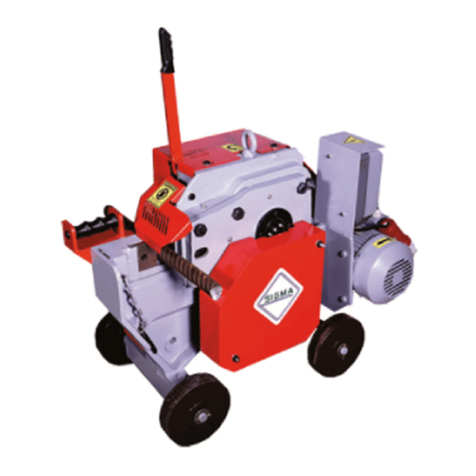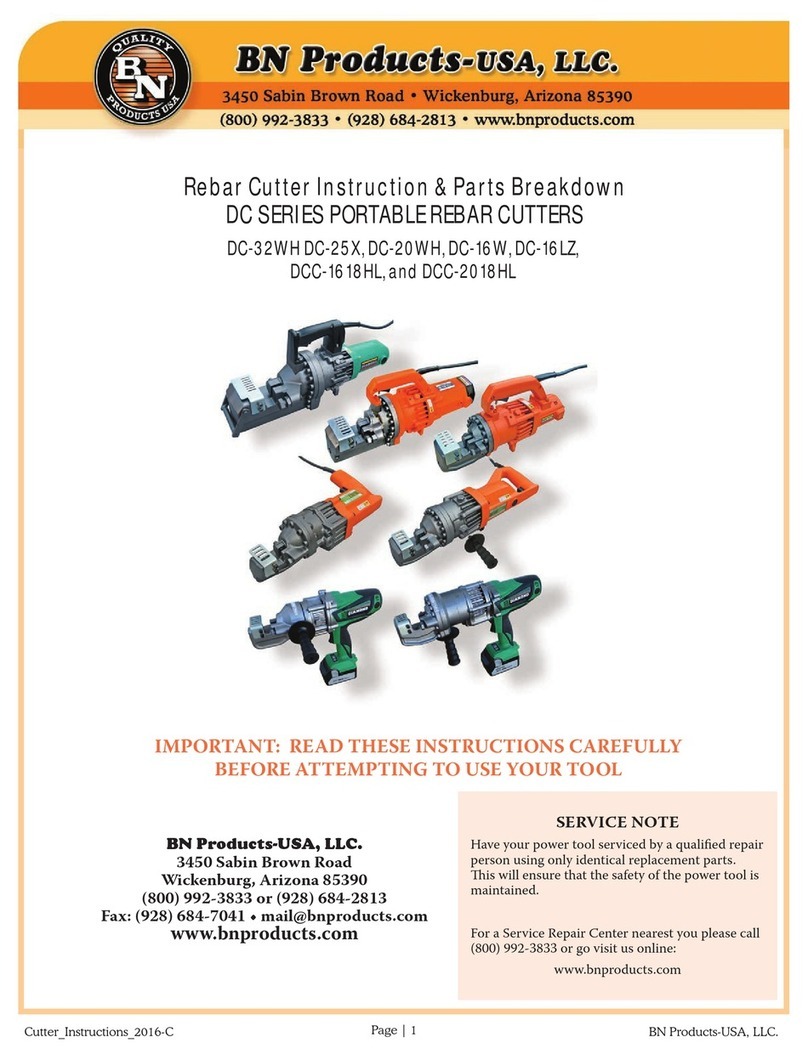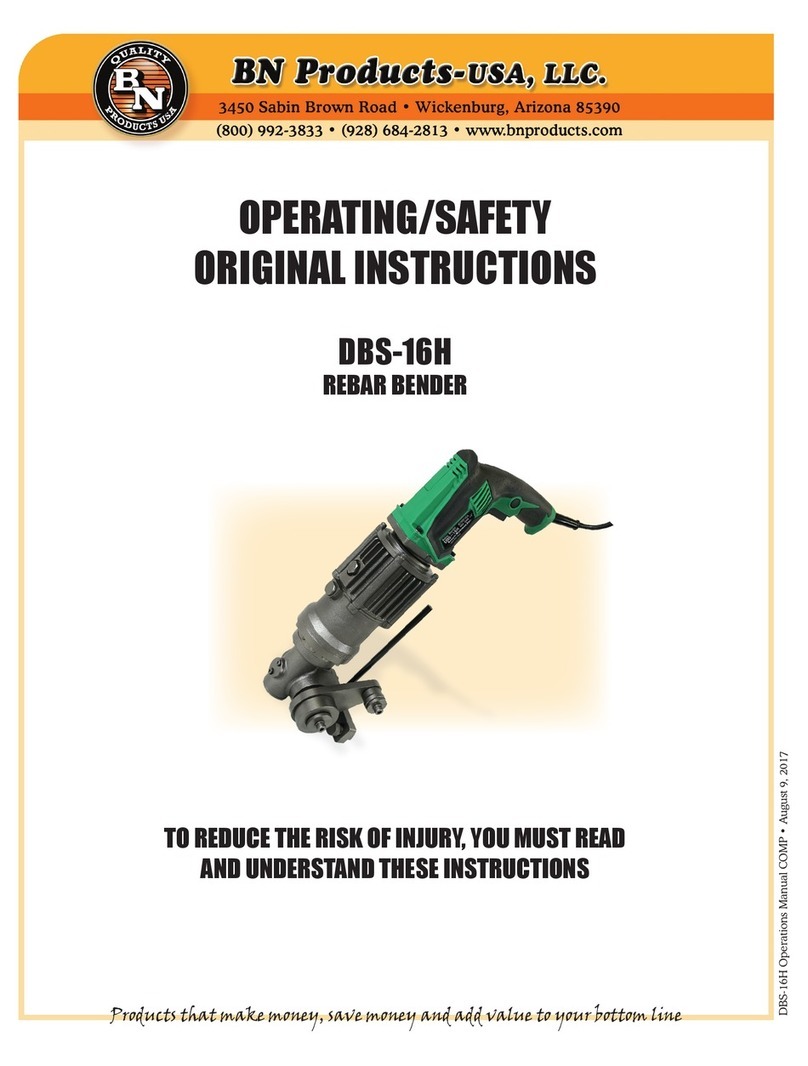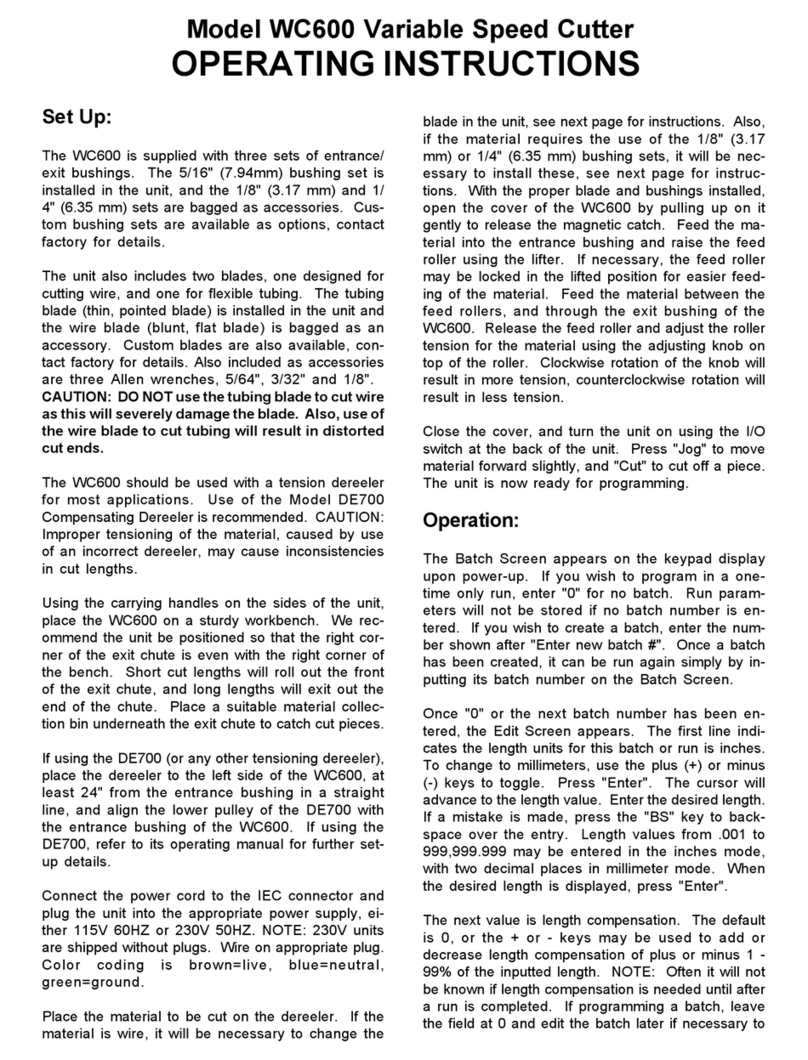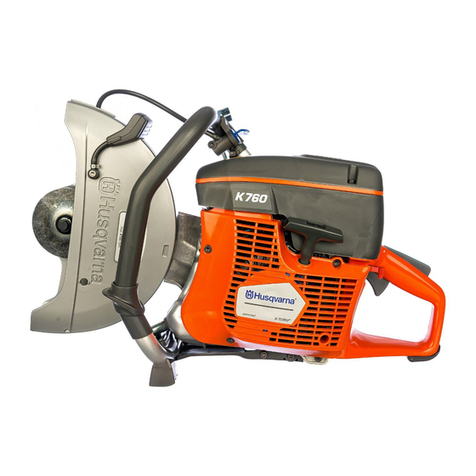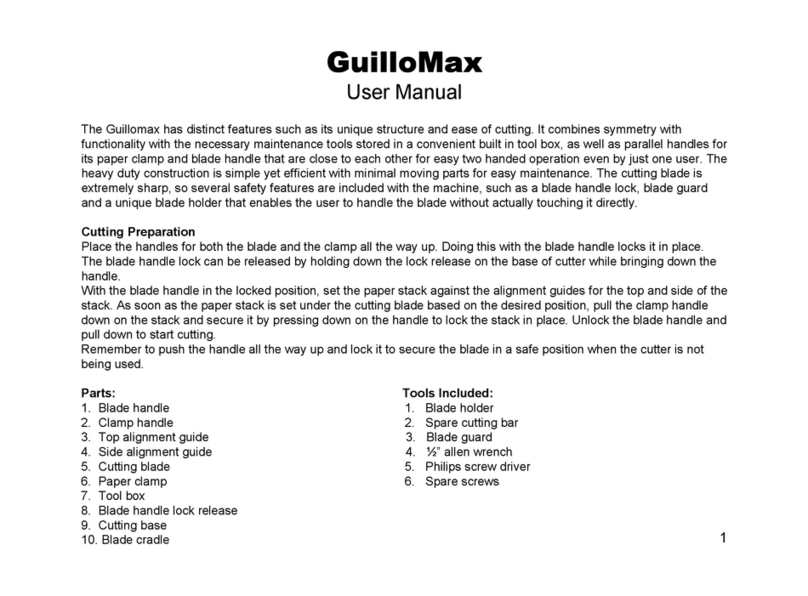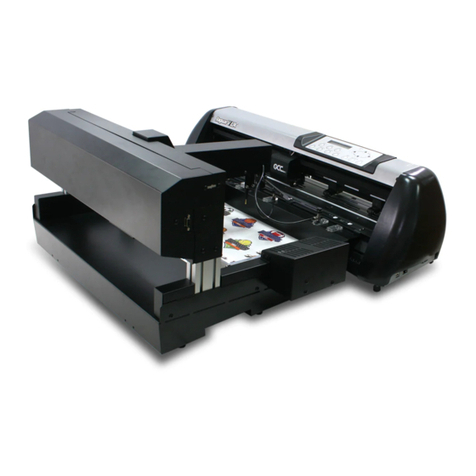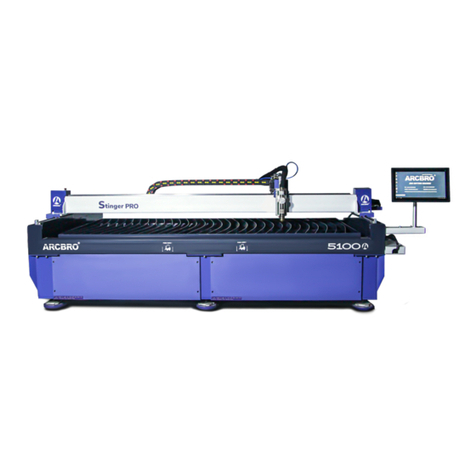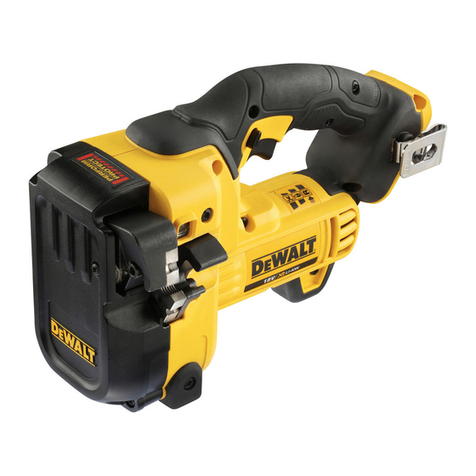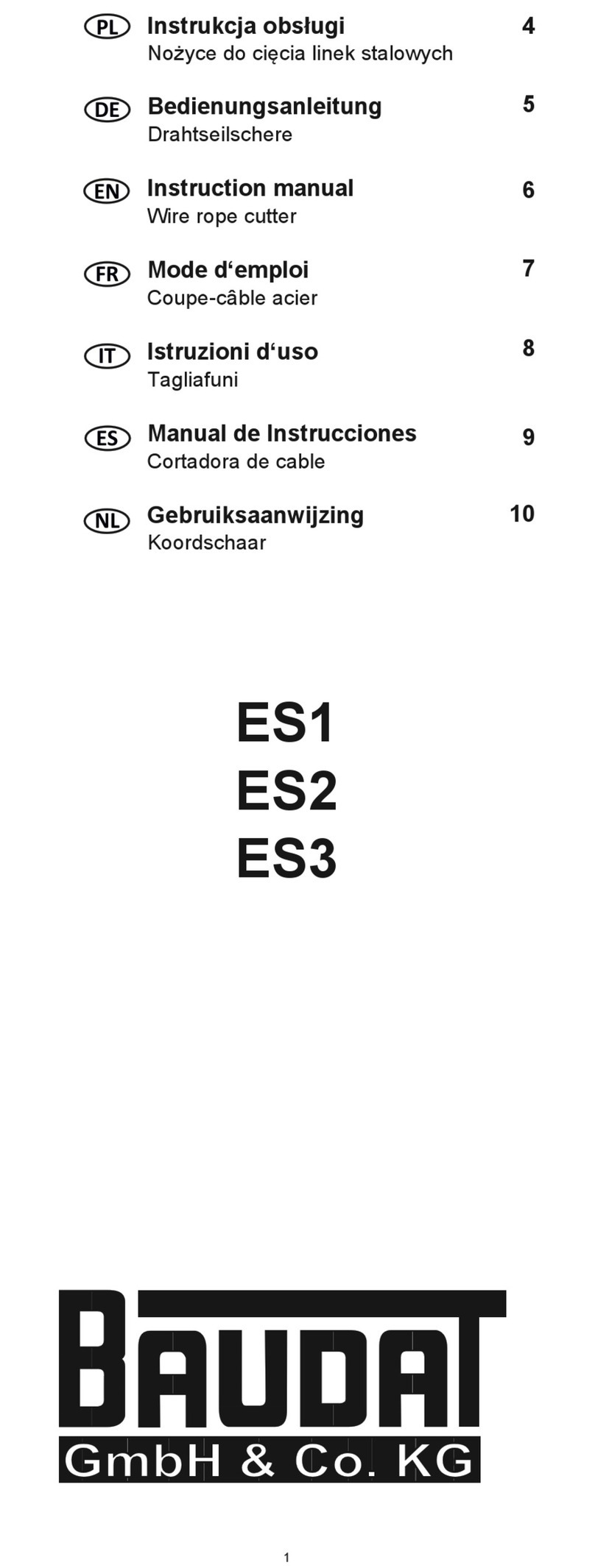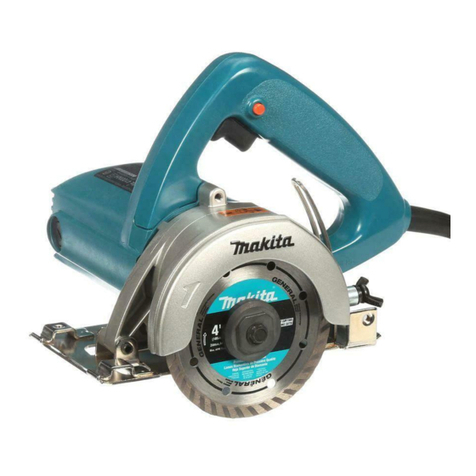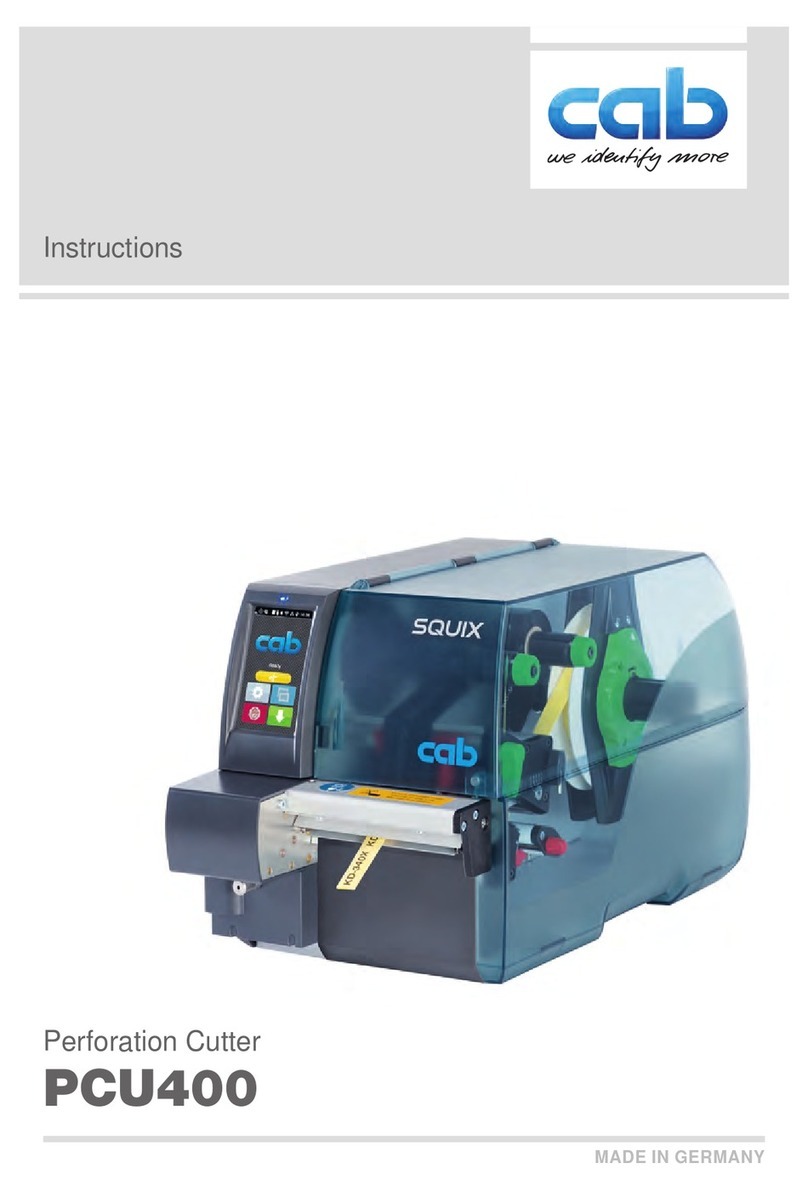BN Products DC Series Datasheet

Cordless_Cutter_Instructions_2020B Page | 1 September, 2020
Rebar Cutter Instructions & Parts Lists
DC SERIES PORTABLE REBAR CUTTERS
CORDLESS MODELS
• DCC-1636BHL • DCC-2036BHL
3450 Sabin Brown Road • Wickenburg, AZ 85390
SERVICE NOTE
Have your power tool serviced by a qualified repair person using only identical replacement
parts. is will ensure that the safety of the power tool is maintained. For a Service Repair
Center nearest you please call (800) 992-3833 or go visit us online:
www.bnproducts.com
IMPORTANT: READ THESE INSTRUCTIONS CAREFULLY
BEFORE ATTEMPTING TO USE YOUR TOOL

Cordless_Cutter_Instructions_2020B Page | 2 September, 2020
DO NOT EXCEED MAXIMUM CUTTING
PRESSURE BY ADDING TO OR MODIFYING
THE HYDRAULIC PUMP.
BLEEDING YOUR PORTABLE
REBAR CUTTER
You may have to bleed the hydraulics on your cutter if the tool
runs unusually slow or doesn’t have the pressure to cut normally.
Do not run tool with low or no oil. For best results please follow
these directions:
1. If piston is still moving, run the tool for 2 minutes to warm
the oil inside. If the piston is not moving, add oil before
warming up for 2 minutes.
2. When the oil is warm, run the piston out just before it re-
turns and stop.
3. Remove the oil plug and top it off with oil.
4. Make a seal with your thumb over the oil plug opening.
5. Run the tool so that it makes a complete cycle.
6. When the piston is completely retracted in the open posi-
tion, gently roll your thumb to let the unwanted air escape.
7. Repeat step #5 and #6 at least three times.
8. Add oil only when the piston is at least halfway out.
9. If you have to add additional oil, repeat #5 and #6.
10. Replace the oil plug and tighten it.
11. Make three or four cuts with rebar. e machine should now
be working properly. Make sure that you observe exactly at
what point the rebar is actually breaking.
12. Pinch a piece of rebar stopping just before it actually breaks.
13. Remove the oil plug again and top off the reserve one more
time.
14. Replace the oil plug and tighten
15. e operation is now complete.
We recommend the following; 20-weight Non-Detergent Hy-
draulic Oils for use with our tools (anti-foam anti-abrasion): Tel-
lus 68 (Shell), Rando HD 68 (Texaco) or Chevron AW 68 (Chev-
ron). Hydraulic oil can also be ordered in quart containers from
your Diamond Tool Distributor.
OPERATING INSTRUCTIONS
CAUTION: Indicates hazard that could result in
minor personal injury and/or product damage.
CARE: Indicates hazard that will result
in product damage.
PRE-USE CHECKS
1. Check oil level. (See Maintenance)
2. Check condition of cutter blocks and tightness of cutter
block bolts. (See Maintenance) - CHECK FOR CRACKS
IN HOUSING
CAUTION: Using loose or cracked cutter blocks may
result in injury to operator as well as damage to the
tool.
GENERAL SAFETY PRECAUTIONS
Use rebar cutters on maximum Grade 60 steel reinforcing bars
only. ese tools are not to be used in cutting other kinds of
metal or materials. Do not cut ungraded rebar.
IMPORTANT:
Do not attempt to cut rebar by locking the off/on switch to the
on position. is locking procedure is to be used only to warm
the tool in cold climates or used with our hands free electrical
box and foot operated switch. is is a safety issue and may
cause damage to your rebar cutter. Always pull the on/off switch
by hand for each individual cut. A foot operated switch and spe-
cial electrical box are available if you want to use these cutters as
production tools. Contact your local distributor or BN Products
RESTRICT USE TO
DESIGNATED MATERIALS
ere is always a chance that the cut end may shoot out, espe-
cially if less than 30cm (1 foot) in length. Exceeding designated
material specifications greatly increases this risk and will also
damage the tool. Do not attempt to cut rebars harder, thicker or
thinner than specified.
USE EYE PROTECTION
Wear safety goggles, safety glasses with side shields or a face
shield when using cutter.
PROVIDE SAFETY BARRIERS
Erect safety screens to protect coworkers from possible flying
ends. Place a safety screen under the rebar when working in high
places.
EXERCISE PROPER CONTROL
Hold cutter firmly and maintain proper footing and balance.
Do not overreach. When working in a high place, secure cutter
to scaffolding with a safety rope. Check that power cord is not
fouled and keep cord away from sharp edges and heat. Check
that all adjusting wrenches have been removed before using cut-
ter.
GUARD AGAINST ELECTRIC SHOCK
To avoid possible shock, do not handle cutter with wet hands
or use cutter in the rain or damp places. Be aware of all power
lines, electric circuits and other hazards that may be contacted,
especially those that are below the surface or otherwise hidden
from view.
MAINTAIN CUTTER WITH CARE
Inspect cutter before each application. Faulty or loose cutter
blocks could result is personal injury. Keep handle dry, clean and
free from oil and/or grease. Keep housing and piston free of dirt
and iron filings. Check that no screws or bolts are loose or miss-
ing. Follow instructions for maintenance. Inspect switch, cord,
plug and any extension cable at regular intervals. It is a good idea
to inspect the housing for any cracks before operating.

Cordless_Cutter_Instructions_2020B Page | 3 September, 2020
3. Check that the power source is appropriate to the cutter.
CARE: If voltage is too high, the motor will burn out. If
voltage is too low, insufficient power will be generated.
Never use DC current.
4. Check that power supply is properly grounded.
CAUTION: Failure to ground power supply may result
in electric shock to operator (DC-16LZ, DC-16W and
DC-32WH have double-insulated motors and do not
require grounding.)
5. Check that cord is undamaged and that plug is not loose.
CAUTION: Cut or abraded covering could result in a
short and Electric shock to operator.
6. If an extensions cable is to be used, make sure that it is
undamaged and that it is the proper wire gauge thickness
for the length. See table below.
7. Before plugging in the tool, make sure that the switch lock
is OFF.
CAUTION: If switch lock is ON, cutter will start as
soon as it is plugged in. To disengage lock, pull trigger-
switch and press lock-button, which will pop out.
Length 110/115 50/60 Hz
Cable Size (AWG)
Up to 15mm (50 ft.) 14
Up to 30mm (100 ft.) 12
Up to 45mm (150 ft.) 10
WARM-UP
In cold weather you should warm up the tool unit for 30-60 sec-
onds so that the hydraulic oil reaches the proper viscosity. Pull
trigger-switch to extend piston and release when it has reached
its full stroke. Repeat 15-20 times.
STOPPER BOLT ADJUSTMENT
THE STOPPER BOLT IS PROBABLY THE MOST
IMPORTANT PART OF YOUR PORTABLE CUTTER.
e adjustable stopper functions to maintain the rebar in the
correct position during cutting and must be properly set for
each size of rebar before use.
1. Screw in stopper to provide sufficient clearance for rebar.
2. Insert rebar fully into U-shaped support. Make sure that
rebar is resting on the base of the support.
3. Keeping rebar at right angles (90 degrees) to front cutter
block, screw out stopper until it is just touching the rebar.
Once set, the stopper needs no further adjustment while
cutting rebar of the same diameter, but must be reset for a
different size rebar.
CAUTION: Failure to correctly set the stopper bolt will
result in excessive wear of cutter blocks and may cause
cut end to fly out. is will also lead to piston and cylin-
der damage.
CUTTING
1. Insert rebar between stopper and front cutter block, mak-
ing sure that it is properly seated in U-shaped support.
2. Pull trigger-switch and keep depressed while piston ad-
vances and rebar is cut. (If switch is released at an interme-
diate point, piston will stop.)
3. When cut is completed, release switch. Piston retracts
automatically (Note that switch cannot be reactivated until
piston has fully retracted.)
POINTS OF ATTENTION
1. 1. Be especially careful when cutting off short lengths
(30cm/12” or less) as the cut end tends to fly out.
CAUTION: Flying ends are a hazard to all personnel in
the vicinity. Erect safety screens.
2. Do not cover air vents or operate the tool on dirt – use a
plywood base under the rebar cutter to keep armature and
fan clean
CARE: If the vents are covered, the motor will overheat
and may burn out.
3. If hydraulic oil exceeds 70 degrees C (158 degrees F) in
temperature, power will drop. Allow unit to cool before
resuming operation. (Be particularly careful in summer,
when the aluminum pump case heats up quicker.)
4. If a drop in power is observed and motor is unusually hot,
check carbon-brushes. (See maintenance)
5. If piston should ever fail to retract completely, push rear
cutter block backwards to manually retract piston or check
under piston to remove any debris keeping the piston from
retracting.
CAUTION: Use a rebar or flat metal bar for this pur-
pose. Never push cutter block with any part of the hand,
even if gloved.
NOTE: Rebar cutters manufactured in after 2007 have a
safety release valve for retracting the piston if it doesn’t
return to the start position. is is usually caused by cut-
ting improperly seated rebar that becomes jammed between
the cutting blocks. On these newer models simply rotate the
Allen set screw a quarter turn to retract the piston. On the
DC-20WH, see parts breakdown part #64 for location of this
release valve.
Once piston has been retracted, pull trigger-switch long
enough to partially advance piston. Unplug unit. Check piston
and housing for accumulated dirt and iron filings that may be
jamming the piston. (See Maintenance) If, after cleaning, piston
still does not automatically retract when fully extended, the
piston itself may be damaged. Return the unit to an authorized
repair center or BN Products for repair.
MAINTENANCE ON CUTTER BLOCKS
Before using, always check that the two bolts on each cutter
block are properly tightened. Using a loose block will result in
damage to block and housing. Also check condition of cutter

Cordless_Cutter_Instructions_2020B Page | 4 September, 2020
blocks. If either cutting edge is dull or chipped, remove retain-
ing bolts and rotate both blocks so that two new edges come
into use. Replace and tighten bolts. (Each block has four cutting
edges.) When all four cutting edges have been used or if either
block is cracked or otherwise damaged, replace both blocks.
CAUTION: A loose or cracked block may result in injury to
operator.
CLEANING
Clean your tool every day, preferably immediately after use.
CAUTION: Wear gloves to protect hands from metal splin-
ters.
Do not use an air gun: blasting with air can cause metal filings
and/or dust to get into eyes and respiratory system.
Disconnect the unit. Wipe or brush away all dirt and metal
filings. Pay particular attention to the lower half of the piston,
where dirt is more easily accumulated.
NEVER USE YOUR CUTTER TO CUT REBAR IN WET
CONCRETE.
OIL-LEVEL CHECK
As the cutters are hydraulically operated, the oil-level must be
checked at frequent intervals, preferably every day. Failure to
maintain the oil at the proper level results in a drop in pressure
and loss of cutting power.
CAUTION: Hydraulic oil is highly flammable. Keep away
from sparks and naked flame. Do not smoke.
CAUTION: Hydraulic oil may cause inflammation of the
eyes and skin. If ingested, it will cause diarrhea and vomit-
ing. In case of eye contact, rinse in clean water for at least
15 minutes and consult a physician. In case of skin contact,
wash thoroughly with soap and water. In case of ingestion,
consult a physician immediately. Do not induce vomiting.
1. Oil should be warm but not hot. Warm up unit if cold.
2. Adjust stopper and make three or four cuts, noting exactly
at what point the rebar is actually breaking.
3. Pinch a short piece of rebar, stopping just before it breaks
off. Unplug unit from power source.
4. With partially severed rebar in place, oil-plug should be
straight up. (If unit is hot, allow cooling down.)
5. Remove oil-plug and seal-washer (packing).
CAUTION: Never remove oil-plug when unit is hot or
oil will spurt out.
6. Check that oil is level with bottom of plug hole (i.e. that
pump case if full to the brim). If oil level is too low, top up
with 20-weight hydraulic oil with anti-foam and anti-abra-
sion properties (ISO viscosity grade VG46, e.g. Shell oil
Tellus 68, Mobil oil DTE-25 or Esso Uni power SQ46).
7. After topping off, extract air from system. Gently tilt cutter
lengthwise and return it to a level position. Top off again
and tilt in the opposite direction. Repeat this process until
all air has been extracted.
CARE: Cutter cannot function properly if oil contains
air bubbles.
8. Replace seal washer (packing) and oil plug. Connect cutter
to power source and completely sever rebar.
OIL-CHANGE
e hydraulic oil should be changed at least once a year, sooner
if it appears dirty.
NOTE: Hydraulic oil should be warm before draining
1. Unplug unit from power source. Remove oil-plug and pack-
ing. Turn cutter over and drain oil into a suitable recepta-
cle. When oil ceases to drain out, tilt unit to rear so that oil
trapped in the piston housing can run out. When housing is
empty, tilt unit in the opposite direction to empty the resi-
due in the pump case.
2. With drain-hole uppermost, slowly fill the unit with fresh
oil. Replace plug and lightly tighten. Connect unit to power
source and advance piston two or three times. Unplug unit
and remove oil-plug. Top off oil-level and replace plug.
3. Finally, follow procedure for oil-level check. (Steps 2-8)
NOTE: Dispose of hydraulic oil in accordance with local regula-
tions. Do not pour into the sea, a river, a lake or drains.
BOLT TIGHTNESS
Once a week, or after every 500 cuts, check the tightness of all
bolts; especially those bolts securing the housing to the cylinder.
Loose bolts will result in a loss of power. Make sure that the bolts
holding both cutter blocks are also tight
CARBON BRUSHES
Inspect the two carbon brushes at least once every two months.
(Nominal brush life is 200 hours).
CARE: Worn brushes will result in power loss, cause the motor
to run hot and irreparably damage the armature.
1. Disconnect unit.
2. Unscrew both brush caps and pull out carbon brushes.
3. Replace brushes if less than 6mm or1/4” in length.

Cordless_Cutter_Instructions_2020B Page | 5 September, 2020
OVERHAUL
Return the unit to an authorized agent for overhaul at least
once every two years, sooner if subjected to heavy use. Call
(800) 992-3833
GENERAL SAFETY RULES
WARNING: Read all instructions. Failure to follow all instruc-
tions listed below may result in electric shock, fire and/or seri-
ous injury. e term “power tool” in all of the warnings listed
below refers to your mains-operated (corded) power tool or
battery-operated (cordless) power tool.
WORK AREA SAFETY
Keep work area clean and well lit. Cluttered or dark areas
invite accidents.
Do not operate power tools in explosive atmospheres, such as
in the presence of flammable liquids, gases or dust. Power tools
create sparks which may ignite the dust or fumes.
Keep children and bystanders away while operating a power
tool. Distractions can cause you to lose control.
ELECTRICAL SAFETY
Power tool plugs must match the outlet. Never modify the
plug in any way. Do not use any adapter plugs with earthed
(grounded) power tools. Unmodified plugs and matching out-
lets will reduce risk of electric shock. Avoid body contact with
earthed or grounded surfaces such as pipes, radiators, ranges
and refrigerators. ere is an increased risk of electric shock if
your body is earthed or grounded.
Do not expose power tools to rain or wet conditions. Water
entering a power tool will increase the risk of electric shock.
Do not abuse the cord. Never use the cord for carrying, pull-
ing or unplugging the power tool. Keep cord away from heat,
oil sharp edges or moving parts. Damaged or entangled cords
increase the risk of electric shock.
When operating a power tool outdoors, use an extension cord
suitable to outdoor use. Use a cord suitable for outdoor use
reduces the risk of electric shock.
PERSONAL SAFETY
Stay alert, watch what you are doing and use common sense
when operating a power tool. Do not use a power tool while
you are tired or under the influence of drugs, alcohol or medi-
cation. A moment of inattention while operating power tools
may result in serious personal injury.
Use safety equipment. Always wear eye protection. Safety
equipment such as dust mask, non-skid safety shoes, hard
hat, or hearing protection used for appropriate conditions will
reduce personal injuries.
Avoid accidental starting. Ensure the switch is in the off-posi-
tion before plugging in. Carrying power tools with your finger
on the switch or plugging in power tools that have the switch
on invites accidents.
Remove any adjusting key or wrench before turning the power
tool on. A wrench or a key left attached to a rotating part of the
power tool may result in personal injury.
Do not overreach. Keep proper footing and balance at all
times. is enables better control of the power tool in unex-
pected situations.Dress properly. Do not wear loose clothing or
jewelry. Keep your hair, clothing and gloves away from mov-
ing parts. Loose clothes, jewelry or long hair can be caught in
moving parts.
If devices are provided for the connection of dust extraction
and collection facilities, ensure these are connected and prop-
erly used. Use of these devices can reduce dust-related hazards.
POWER TOOL USE AND CARE
Do not force the power tool. Use the correct power tool for
your application. e correct power tool will do the job better
and safer at the rate for which it was designed
.
Do not use the power tool if the switch does not turn it on and
off. Any power tool that cannot be controlled with the switch is
dangerous and must be repaired.
Disconnect the plug from the power source and/or the bat-
tery pack from the power tool before making any adjustments,
changing accessories, or storing power tools. Such preventa-
tive safety measures reduce the risk of starting the power tool
accidentally.
Store idle power tools out of the reach of children and do not
allow persons unfamiliar with the power tools or these instruc-
tions to operate the power tool. Power tools are dangerous in
the hands of untrained users.
Maintain power tools. Check for misalignment or binding or
moving parts, breakage of parts and any other condition that
may affect the power tools operation. If damaged, have the
power tool repaired before use. Many accidents are caused by
poorly maintained power tools.
Keep cutting tools sharp and clean. Properly maintained cut-
ting tools with sharp cutting edges are less likely to bind and are
easier to control.
Use the power tool, accessories and tool bits etc., in accordance
with these instructions and in the manner intended for the
particular type of power tool, taking into account the working
conditions and the work to be performed. Use of the power
tool for operations different from those intended could result in
a hazardous situation.
Other manuals for DC Series
1
This manual suits for next models
2
Table of contents
Other BN Products Cutter manuals
Popular Cutter manuals by other brands

Bosch
Bosch POF 1400 ACE Original instructions
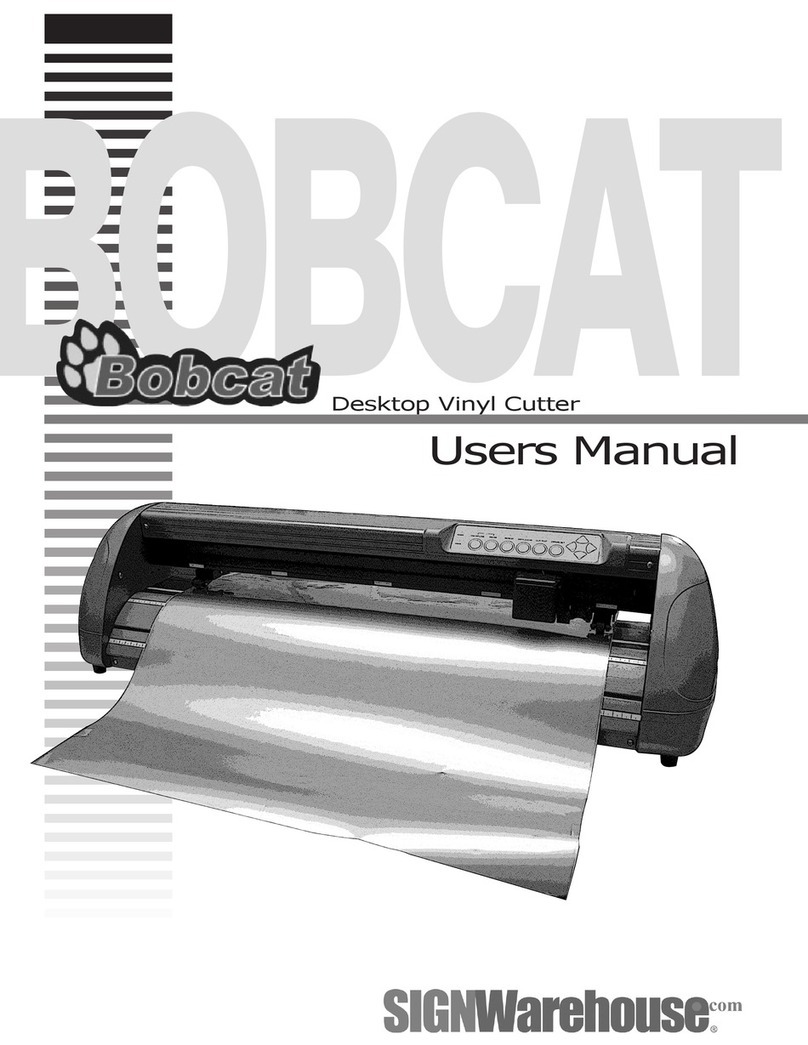
SignWarehouse.com
SignWarehouse.com Bobcat BA-60 user manual
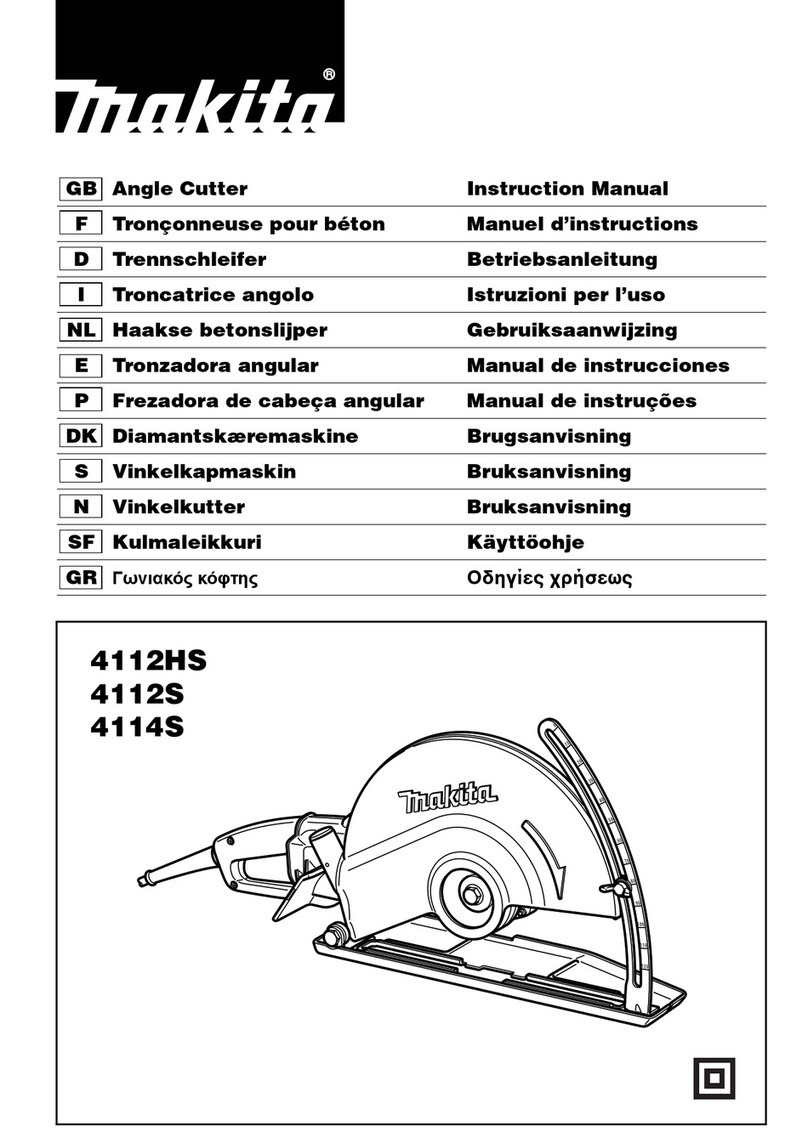
Makita
Makita 4112HS instruction manual

GEISMAR STUMEC
GEISMAR STUMEC MTZ 350S manual
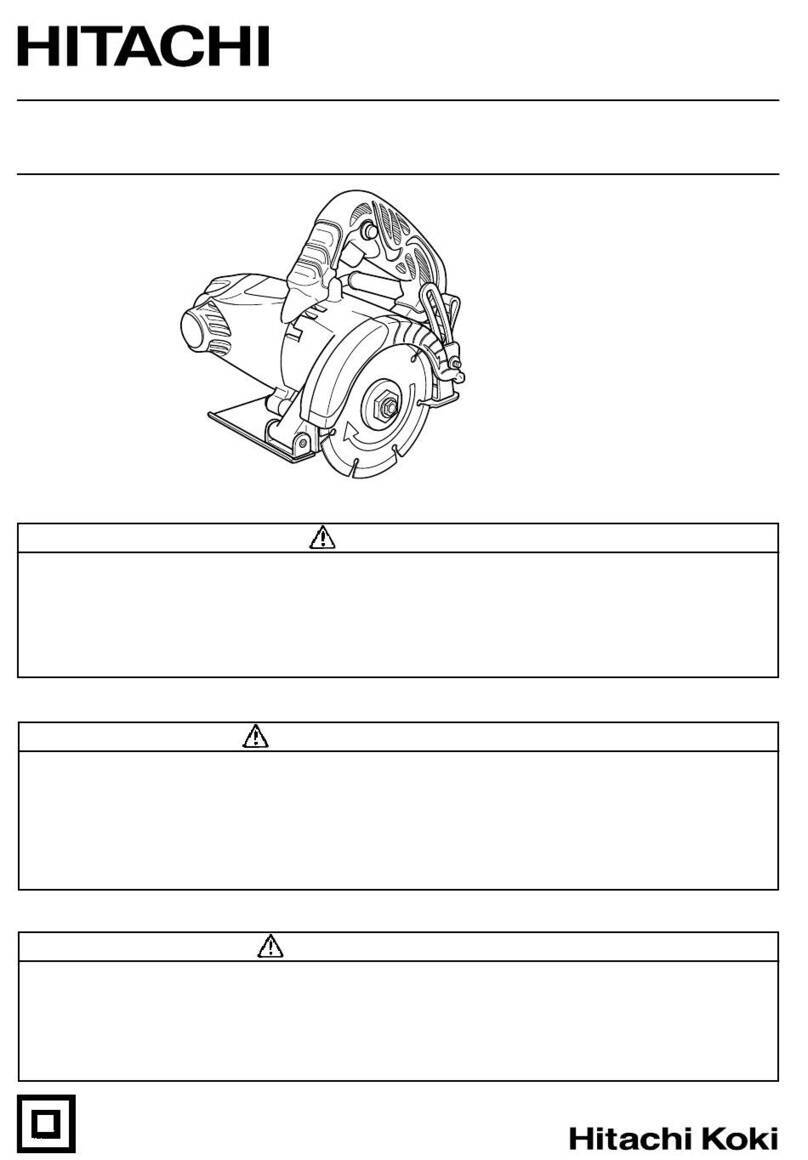
Hitachi
Hitachi CM 4SB2 Safety instructions and instruction manual
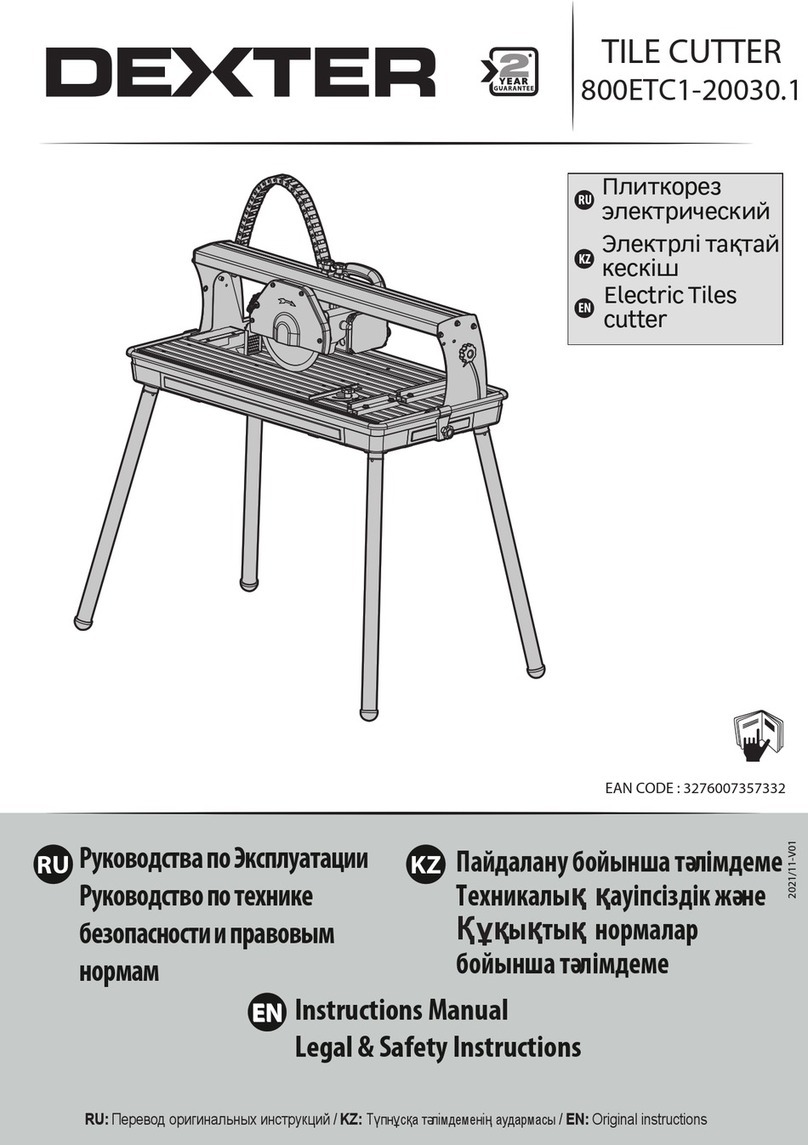
Dexter Laundry
Dexter Laundry 800ETC1-20030.1 instruction manual
